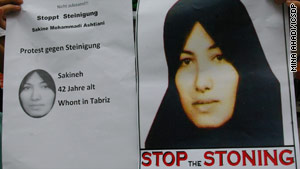In a dramatic twist of fate, a widow caught in the throes of a controversial legal battle in Iran has recently received a temporary reprieve from the torment of stoning, a grim punishment steeped in archaic practices. This decision raises critical questions about the future of justice in the Islamic Republic and the broader implications of human rights in a nation long criticized for its stringent interpretations of law.
The case of this widow, emblematic of countless others who suffer under extreme judicial practices, has garnered international attention, drawing scrutiny not only from human rights activists but also from influential global entities. The question arises: is this respite merely a strategic maneuver by authorities to quell dissent and deflect condemnation, or does it signify a genuine shift toward a more humane legal framework?
More than a simple moratorium, this situation underscores a complex interplay between tradition and modernism. For centuries, stoning has been utilized as a punitive measure in various cultures, often justified by misinterpretations of religious texts. However, as societal values diversify and the pressures of global opinion mount, the legitimacy of such barbaric practices faces increasing scrutiny. Can a nation like Iran, steeped in its historical and cultural contexts, reconcile these age-old traditions with the evolving norms of contemporary civilization?
This respite presents a formidable challenge for Iranian authorities. On one hand, they must contend with internal advocacy for reform—a movement that is gaining momentum amidst waves of change sweeping across the region. On the other hand, succumbing to the pressures of international sentiment could be perceived as an erosion of sovereignty, potentially igniting backlash from hardline factions within the government and society. Where, then, lies the balance between adhering to cultural identity and embracing a progressive judicial ethos?
As discussions surrounding this monumental case unfold, it becomes increasingly apparent that the ramifications extend beyond the legal spheres. The visibility garnered by this single widow’s plight could catalyze broader discussions about gender inequality, legal reform, and human rights across the Middle East. The potential for transformation is palpable, yet riddled with uncertainty. Can this epoch signify the dawning of a new era in human rights for Iran, or will it be merely a fleeting moment in the annals of its turbulent history?
The world watches with bated breath, eager to see if this case will serve as a catalyst for change or as a grim reminder of the harsh realities many face under flawed legal systems. As the curtain rises on this unfolding saga, one cannot help but ponder: will justice prevail in a nation weighed down by its own histories?
